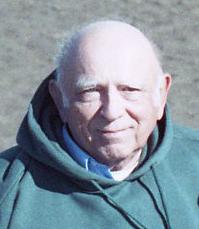
Isidore Hauser (1923 - 2011)
Education
- B.S., Physics, Brooklyn College
- 1956
- Ph.D., Physics, University of Iowa - Directional Correlation of β-Rays
Positions
- 1961 - 1964
- Assistant Professor of Physics, Illinois Institute of Technology
- 1964 - 1983
- Associate Professor of Physics, Illinois Institute of Technology
- 1983 - 1988
- Professor of Physics, Illinois Institute of Technology
Biography
Isidore Hauser was born in Brooklyn, New York on February 4, 1923 and died
at age 88 on June 19, 2011 in Boulder Colorado. He completed a B.S. degree
at Brooklyn College and obtained a Ph.D at the University of Iowa in 1956.
While in Iowa he met and married artist Esther Elaine (nee) Archer. They
moved to Chicago in 1961, when he joined the IIT physics faculty. In 1965
Hauser was left a single parent of 3 young children after his wife's death.
In 1986 he remarried to Geraldine (Dena) Hauser. Upon retirement in 1988,
Hauser moved to Boulder Colorado, close by his children, where he continued
his research, played expert chess, and remained active in cultural,
environmental, political, and social issues.
Hauser joined the Army in 1942, and served in an artillery unit. He confided
to colleagues that he had been profoundly affected by extreme poverty during
the depression and the events of World War II. In particular, for several
years thereafter he would "drop to the ground" whenever he heard a loud
noise. While on sabbatical leave from IIT in 1985 in Mexico City, Hauser
experienced two tremendous earthquakes -- he was in the shower each time.
Although his Ph.D. thesis was in high energy physics, Hauser is most widely
known for his pioneering research with colleague
Frederick Ernst on the analysis of axially
symmetric solutions of the Einstein field equations. Their collaboration,
which extended over a period of three decades, was culminated by their proof
of a conjecture by Robert Geroch. Geroch conjectured that all such
axis-assessable solutions might be members of a group, and might be locally
transformable into one another. Ernst and Hauser published the proof of
this conjecture in 1981, by relating the transformation of these solutions
to a homogeneous Hilbert problem.
Hauser's lectures were formal, with close attention to mathematical rigor
and completeness. His written papers showed a similar care and attention
to detail.
Notable Publications
-
"A Homogeneous Hilbert Problem For The Kinnersley-Chitre
Transformations", I. Hauser and F.J. Ernst, Journal of
Mathematical Physics 21, 1126 (1980). {cited 120 times}
-
"Integral Equation Method For Effecting Kinnersley-Chitre
Transformations", I. Hauser and F.J. Ernst, Physical
Review D. 20, 362 (1979). {cited 99 times}
-
"Integral Equation Method For Effecting Kinnersley-Chitre
Transformations II", I. Hauser and F.J. Ernst, Phys Rev. D
20, 1783 (1979). {cited 72 times}
-
"A Homogeneous Hilbert Problem For The Kinnersley-Chitre Transformations
Of Electrovac Spacetimes", I. Hauser and F.J. Ernst, Journal of
Mathematical Physics 21 1418 (1980). {cited 62 times}
-
"Proof Of A Geroch Conjecture", I. Hauser and F.J. Ernst, Journal of
Mathematical Physics 22, 1051 (1981). {cited 57 times}
